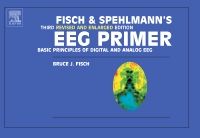Fisch and Spehlmann's EEG Primer, 3rd Edition
Basic Principles of Digital and Analog EEG
Author :
Bruce Fisch
Organized to serve as a resource for those just beginning to learn EEG as well as those who are already experienced, it contains concise presentations of the fundamentals of EEG technology and interpretation as well as an up-to-date review of the lat
...view more
Organized to serve as a resource for those just beginning to learn EEG as well as those who are already experienced, it contains concise presentations of the fundamentals of EEG technology and interpretation as well as an up-to-date review of the latest digital EEG technology and EEG clinical correlations.
Unlike other EEG textbooks, the second half of this book is uniquely organized according to EEG findings rather than individual disorders. This is the best practical approach to learning interpretation because it mirrors the actual practice of EEG, the EEGer is confronted by EEG patterns, not diagnoses. All other textbooks organize findings according to clinical disorder. The book contains sufficient information to serve as a laboratory manual. The appendices contain the American Clinical Neurophysiology Society guidelines for EEG and the International Federation of Clinical Neurophysiology glossary.
Each chapter begins with a summary of major concepts. An overview of EEG can be quickly obtained by those beginning the study of EEG by simply reading the introductory summaries of all chapters before reading the contents of the chapters.
Unlike other EEG textbooks, the second half of this book is uniquely organized according to EEG findings rather than individual disorders. This is the best practical approach to learning interpretation because it mirrors the actual practice of EEG, the EEGer is confronted by EEG patterns, not diagnoses. All other textbooks organize findings according to clinical disorder. The book contains sufficient information to serve as a laboratory manual. The appendices contain the American Clinical Neurophysiology Society guidelines for EEG and the International Federation of Clinical Neurophysiology glossary.
Each chapter begins with a summary of major concepts. An overview of EEG can be quickly obtained by those beginning the study of EEG by simply reading the introductory summaries of all chapters before reading the contents of the chapters.
Your discount code here : #FB456
PRINT ON DEMAND - DELIVERY CAN TAKE UP TO 10 DAYS
Organized to serve as a resource for those just beginning to learn EEG as well as those who are already experienced, it contains concise presentations of the fundamentals of EEG technology and interpretation as well as an up-to-date review of the latest digital EEG technology and EEG clinical correlations.
Unlike other EEG textbooks, the second half of this book is uniquely organized according to EEG findings rather than individual disorders. This is the best practical approach to learning interpretation because it mirrors the actual practice of EEG, the EEGer is confronted by EEG patterns, not diagnoses. All other textbooks organize findings according to clinical disorder. The book contains sufficient information to serve as a laboratory manual. The appendices contain the American Clinical Neurophysiology Society guidelines for EEG and the International Federation of Clinical Neurophysiology glossary.
Each chapter begins with a summary of major concepts. An overview of EEG can be quickly obtained by those beginning the study of EEG by simply reading the introductory summaries of all chapters before reading the contents of the chapters.
Unlike other EEG textbooks, the second half of this book is uniquely organized according to EEG findings rather than individual disorders. This is the best practical approach to learning interpretation because it mirrors the actual practice of EEG, the EEGer is confronted by EEG patterns, not diagnoses. All other textbooks organize findings according to clinical disorder. The book contains sufficient information to serve as a laboratory manual. The appendices contain the American Clinical Neurophysiology Society guidelines for EEG and the International Federation of Clinical Neurophysiology glossary.
Each chapter begins with a summary of major concepts. An overview of EEG can be quickly obtained by those beginning the study of EEG by simply reading the introductory summaries of all chapters before reading the contents of the chapters.
Author Information
By Bruce Fisch, Comprehensive Epilepsy Program, Clinical Neurophysiology Laboratories, Louisiana State University School of Medicine, New Orleans, LA, USA
| ISBN Number | 9780444821485 |
|---|---|
| Main Author | By Bruce Fisch |
| Copyright Year | 2000 |
| Edition Number | 3 |
| Format | Book |
| Trim | Other |
| Imprint | Elsevier |
| Page Count | 644 |
| Publication Date | 16 Dec 1999 |
| Stock Status | IN STOCK - This may take up to 5 business days to ship |
Part A: Technical background.
1. The source of the EEG. 1.1 The generator of the EEG. 1.2 Rhythmical EEG activity. 1.3 Recording of electrical potentials with scalp electrodes. 2. Recording electrodes. 2.1 Electrode shapes and application methods. 2.2 Electrical properties of recording electrodes. 2.3 Electrode placement. 2.4 Recording non-cerebral potentials. 3. Digital and analog EEG instruments: parts and functions. Introduction. 3.1 The electrode panel. 3.2. Analog EEG instrument input selector switches. 3.3 Analog and digital calibration. 3.4 Amplifiers. 3.5 Filters. 3.6 Analog writing units. 3.7 Analog to digital conversion. 3.8 The signal display. 3.9 Digital filtering. 3.10 Digital montage selection and montage reformatting. 3.11 Digital data storage and transmission. 3.12 Electrical safety. 4. Spatial analysis of the EEG. 4.1 Multichannel recordings. 4.2 Bipolar montages. 4.3 Common electrode reference montages. 4.4 Average reference montages. 4.5 Weighted average montages. 4.6 Laplacian montages. 4.7 Source localization. 4.8 Montage display and design. 4.9 Analysis of the topography of the EEG voltage field. 4.10 Summary. 5. The product of the recording: the clinical EEG record. 5.1 General technical standards. 5.2 Standards for pediatric recordings. 5.3 Standards for recordings in cases of suspected cerebral death. 5.4 Telephone transmission. 6. Artifacts. 6.1 Artifacts from the patient. 6.2 Interference. 6.3 Artifacts arising from recording electrodes and equipment. 7. Special methods of analysis and recording. 7.1 Quantitative EEG analysis. 7.2 Topographic mapping. 7.3 Automated event detection. 7.4 Intraoperative and intensive care unit monitoring. 7.5 Ambulatory EEG recording. 7.6 EEG recording with simultaneous video monitoring.
Part B: The normal EEG.
8. Definition of the normal EEG, relation to brain function. 8.1 Definition of the normal EEG. 8.2 A normal EEG does not always mean normal brain function. 8.3 An abnormal EEG does not necessarily mean clinically abnormal brain function. 9. Descriptors of EEG activity. 9.1 Waveform. 9.2 Repetition. 9.3 Frequency. 9.4 Amplitude. 9.5 Distribution. 9.6. Phase relation. 9.7 Timing. 9.8 Persistence. 9.9 Reactivity. 10. The normal EEG from premature age to the age of 19 years. 10.1 Neonatal EEG. 10.2 Infants from full term to 3 months of age. 10.3 Infants from 3 months to 12 months of age. 10.4 Children and adolescents from 1 to 19 years of age. 11. The normal EEG of wakeful resting adults of 20-60 years of age. 11.1 The alpha rhythm. 11.2 Beta rhythms. 11.3 Mu rhythm. 11.4 Lambda waves. 11.5 Vertex sharp transients (V waves). 11.6 Kappa rhythm. 11.7 Normal posterior theta rhythms. 11.8 The low voltage EEG. 11.9 Major abnormalities. 12. The normal sleep EEG of adults over 20 years. 12.1 Elements of normal sleep activity. 12.2 Sleep stages. 12.3 Sleep cycles. 12.4 Deviations from normal sleep. 13. The normal EEG of adults over 60 years of age. 13.1 Alpha rhythm. 13.2 Beta rhythm. 13.3 Sporadic generalized slow waves. 13.4 Intermittent temporal slow waves. 13.5 Sleep. 13.6 Major abnormalities. 14. Activation procedures. 14.1 Hyperventilation. 14.2 Sleep. 14.3 Photic stimulation. 14.4 Other stimuli. 14.5 Pentylenetetrazol, bemegride and other convulsant drugs.
Part C: The abnormal EEG.
15. Abnormal EEG patterns, correlation with underlying cerebral lesions and neurological diseases. 15.1 Definition of the abnormal EEG. 15.2 Correlation between abnormal EEG patterns, general cerebral pathology and specific neurological diseases. 15.3 The diagnostic value of the EEG. 16. Classification of seizures. 16.1 Definitions. 16.2 Classification of seizures - general. 16.3 Classification of seizures - specific. 16.4 Seizure classification and epilepsy syndrome diagnosis. 17. Localized epileptiform patterns. 17.1 Description of patterns. 17.2 Clinical significance of focal epileptiform activity. 17.3 Other EEG abnormalities associated with focal epileptiform activity. 17.4 Mechanisms underlying focal epileptiform activity. 17.5 Specific disorders causing focal epileptiform activity. 18. Generalized epileptiform patterns. 18.1 Description of patterns. 18.2 Clinical significance of generalized epileptiform activity. 18.3 Other EEG abnormalities associated with generalized epileptiform activity. 18.4 Mechanisms underlying generalized epileptiform activity. 18.5 Specific disorders causing generalized epileptiform activity. 19. Electrographic seizure patterns, pseudoperiodic patterns, and pseudoepileptiform patterns. 19.1 Neonatal seizures. 19.2 The infantile and juvenile patterns of hypsarrhythmia, slow-spike-and-wave discharges and multifocal independent spikes. 19.3 Pseudoperiodic patterns. 19.4 Ictal patterns without spikes and sharp waves. 19.5 Epileptiform patterns without proven relation to seizures ('pseudoepileptiform patterns'). 20. Localized slow waves. 20.1 Description of pattern. 20.2 Clinical significance of focal slow waves. 20.3 Other EEG abnormalities associated with focal slow waves. 20.4 Mechanisms causing focal slow waves. 20.5 Specific disorders causing focal slow waves. 21. Generalized asynchronous slow waves. 21.1 Description of pattern. 21.2 General clinical significance of generalized asynchronous slow waves. 21.3 Other EEG abnormalities associated with generalized asynchronous slow waves. 21.4 Mechanisms causing generalized asynchronous slow waves. 21.5 Specific disorders causing generalized asynchronous slow waves. 22. Bilaterally synchronous slow waves. 22.1 Description of pattern. 22.2 Clinical significance of bisynchronous slow waves. 22.3 Other EEG abnormalities associated with bisynchronous slow waves. 22.4 Mechanisms causing bisynchronous slow waves. 22.5 Specific disorders causing bilaterally synchronous slow waves. 23. Localized and lateralized changes of amplitude: asymmetries. 23.1 Description of pattern. 23.2 Clinical significance of asymmetries. 23.3 Other abnormalities associated with asymmetries. 23.4 Mechanisms causing local changes of amplitude. 23.5 Specific disorders causing asymmetries of amplitude. 23.6 Asymmetries of alpha, beta, mu and other rhythms. 24. Generalized changes of amplitude: symmetrically high and low amplitude. 24.1 Description of patterns. 24.2 Clinical significance of high and low amplitude. 24.3 Other EEG abnormalities associated with high and low amplitude. 24.4 Mechanisms causing generalized changes of amplitude. 24.5 Specific disorders causing a generalized decrease of amplitude of all types of activity. 24.6 Generalized decrease or absence of alpha rhythm. 24.7 Generalized increase of beta rhythm. 24.8 Changes of amplitude of sleep patterns. 25. Deviations from normal patterns. 25.1 Abnormal frequency of the alpha rhythm. 25.2 Abnormal reactivity of the alpha rhythm. 25.3 Rhythmical activity of theta, alpha and beta frequency in coma and reactivity in coma. 25.4 Abnormal timing and incidence of sleep patterns. 25.5 Immature patterns. 26. The EEG report. 26.1 Description of the record. 26.2 EEG summary impression. 26.3 Clinical correlation.
Appendix I. A glossary of terms most commonly used by clinical electroencephalographers. Appendix II. American Clinical Neurophysiology Society recording guidelines. Report of the Committee on Infectious Diseases. Appendix III. Clinical and electroencephalographic classification of epileptic seizures: definition of terms.
Subject Index.
1. The source of the EEG. 1.1 The generator of the EEG. 1.2 Rhythmical EEG activity. 1.3 Recording of electrical potentials with scalp electrodes. 2. Recording electrodes. 2.1 Electrode shapes and application methods. 2.2 Electrical properties of recording electrodes. 2.3 Electrode placement. 2.4 Recording non-cerebral potentials. 3. Digital and analog EEG instruments: parts and functions. Introduction. 3.1 The electrode panel. 3.2. Analog EEG instrument input selector switches. 3.3 Analog and digital calibration. 3.4 Amplifiers. 3.5 Filters. 3.6 Analog writing units. 3.7 Analog to digital conversion. 3.8 The signal display. 3.9 Digital filtering. 3.10 Digital montage selection and montage reformatting. 3.11 Digital data storage and transmission. 3.12 Electrical safety. 4. Spatial analysis of the EEG. 4.1 Multichannel recordings. 4.2 Bipolar montages. 4.3 Common electrode reference montages. 4.4 Average reference montages. 4.5 Weighted average montages. 4.6 Laplacian montages. 4.7 Source localization. 4.8 Montage display and design. 4.9 Analysis of the topography of the EEG voltage field. 4.10 Summary. 5. The product of the recording: the clinical EEG record. 5.1 General technical standards. 5.2 Standards for pediatric recordings. 5.3 Standards for recordings in cases of suspected cerebral death. 5.4 Telephone transmission. 6. Artifacts. 6.1 Artifacts from the patient. 6.2 Interference. 6.3 Artifacts arising from recording electrodes and equipment. 7. Special methods of analysis and recording. 7.1 Quantitative EEG analysis. 7.2 Topographic mapping. 7.3 Automated event detection. 7.4 Intraoperative and intensive care unit monitoring. 7.5 Ambulatory EEG recording. 7.6 EEG recording with simultaneous video monitoring.
Part B: The normal EEG.
8. Definition of the normal EEG, relation to brain function. 8.1 Definition of the normal EEG. 8.2 A normal EEG does not always mean normal brain function. 8.3 An abnormal EEG does not necessarily mean clinically abnormal brain function. 9. Descriptors of EEG activity. 9.1 Waveform. 9.2 Repetition. 9.3 Frequency. 9.4 Amplitude. 9.5 Distribution. 9.6. Phase relation. 9.7 Timing. 9.8 Persistence. 9.9 Reactivity. 10. The normal EEG from premature age to the age of 19 years. 10.1 Neonatal EEG. 10.2 Infants from full term to 3 months of age. 10.3 Infants from 3 months to 12 months of age. 10.4 Children and adolescents from 1 to 19 years of age. 11. The normal EEG of wakeful resting adults of 20-60 years of age. 11.1 The alpha rhythm. 11.2 Beta rhythms. 11.3 Mu rhythm. 11.4 Lambda waves. 11.5 Vertex sharp transients (V waves). 11.6 Kappa rhythm. 11.7 Normal posterior theta rhythms. 11.8 The low voltage EEG. 11.9 Major abnormalities. 12. The normal sleep EEG of adults over 20 years. 12.1 Elements of normal sleep activity. 12.2 Sleep stages. 12.3 Sleep cycles. 12.4 Deviations from normal sleep. 13. The normal EEG of adults over 60 years of age. 13.1 Alpha rhythm. 13.2 Beta rhythm. 13.3 Sporadic generalized slow waves. 13.4 Intermittent temporal slow waves. 13.5 Sleep. 13.6 Major abnormalities. 14. Activation procedures. 14.1 Hyperventilation. 14.2 Sleep. 14.3 Photic stimulation. 14.4 Other stimuli. 14.5 Pentylenetetrazol, bemegride and other convulsant drugs.
Part C: The abnormal EEG.
15. Abnormal EEG patterns, correlation with underlying cerebral lesions and neurological diseases. 15.1 Definition of the abnormal EEG. 15.2 Correlation between abnormal EEG patterns, general cerebral pathology and specific neurological diseases. 15.3 The diagnostic value of the EEG. 16. Classification of seizures. 16.1 Definitions. 16.2 Classification of seizures - general. 16.3 Classification of seizures - specific. 16.4 Seizure classification and epilepsy syndrome diagnosis. 17. Localized epileptiform patterns. 17.1 Description of patterns. 17.2 Clinical significance of focal epileptiform activity. 17.3 Other EEG abnormalities associated with focal epileptiform activity. 17.4 Mechanisms underlying focal epileptiform activity. 17.5 Specific disorders causing focal epileptiform activity. 18. Generalized epileptiform patterns. 18.1 Description of patterns. 18.2 Clinical significance of generalized epileptiform activity. 18.3 Other EEG abnormalities associated with generalized epileptiform activity. 18.4 Mechanisms underlying generalized epileptiform activity. 18.5 Specific disorders causing generalized epileptiform activity. 19. Electrographic seizure patterns, pseudoperiodic patterns, and pseudoepileptiform patterns. 19.1 Neonatal seizures. 19.2 The infantile and juvenile patterns of hypsarrhythmia, slow-spike-and-wave discharges and multifocal independent spikes. 19.3 Pseudoperiodic patterns. 19.4 Ictal patterns without spikes and sharp waves. 19.5 Epileptiform patterns without proven relation to seizures ('pseudoepileptiform patterns'). 20. Localized slow waves. 20.1 Description of pattern. 20.2 Clinical significance of focal slow waves. 20.3 Other EEG abnormalities associated with focal slow waves. 20.4 Mechanisms causing focal slow waves. 20.5 Specific disorders causing focal slow waves. 21. Generalized asynchronous slow waves. 21.1 Description of pattern. 21.2 General clinical significance of generalized asynchronous slow waves. 21.3 Other EEG abnormalities associated with generalized asynchronous slow waves. 21.4 Mechanisms causing generalized asynchronous slow waves. 21.5 Specific disorders causing generalized asynchronous slow waves. 22. Bilaterally synchronous slow waves. 22.1 Description of pattern. 22.2 Clinical significance of bisynchronous slow waves. 22.3 Other EEG abnormalities associated with bisynchronous slow waves. 22.4 Mechanisms causing bisynchronous slow waves. 22.5 Specific disorders causing bilaterally synchronous slow waves. 23. Localized and lateralized changes of amplitude: asymmetries. 23.1 Description of pattern. 23.2 Clinical significance of asymmetries. 23.3 Other abnormalities associated with asymmetries. 23.4 Mechanisms causing local changes of amplitude. 23.5 Specific disorders causing asymmetries of amplitude. 23.6 Asymmetries of alpha, beta, mu and other rhythms. 24. Generalized changes of amplitude: symmetrically high and low amplitude. 24.1 Description of patterns. 24.2 Clinical significance of high and low amplitude. 24.3 Other EEG abnormalities associated with high and low amplitude. 24.4 Mechanisms causing generalized changes of amplitude. 24.5 Specific disorders causing a generalized decrease of amplitude of all types of activity. 24.6 Generalized decrease or absence of alpha rhythm. 24.7 Generalized increase of beta rhythm. 24.8 Changes of amplitude of sleep patterns. 25. Deviations from normal patterns. 25.1 Abnormal frequency of the alpha rhythm. 25.2 Abnormal reactivity of the alpha rhythm. 25.3 Rhythmical activity of theta, alpha and beta frequency in coma and reactivity in coma. 25.4 Abnormal timing and incidence of sleep patterns. 25.5 Immature patterns. 26. The EEG report. 26.1 Description of the record. 26.2 EEG summary impression. 26.3 Clinical correlation.
Appendix I. A glossary of terms most commonly used by clinical electroencephalographers. Appendix II. American Clinical Neurophysiology Society recording guidelines. Report of the Committee on Infectious Diseases. Appendix III. Clinical and electroencephalographic classification of epileptic seizures: definition of terms.
Subject Index.
Write Your Own Review
Only registered users can write reviews. Please sign in or create an account
product
https://www.us.elsevierhealth.com/fisch-and-spehlmanns-eeg-primer-9780444821485.html
4752
Fisch and Spehlmann's EEG Primer
https://www.us.elsevierhealth.com/media/catalog/product/9/7/9780444821485.jpg
87.2
109
USD
InStock
/Medicine/Neurology
/Books
60
5255039
Organized to serve as a resource for those just beginning to learn EEG as well as those who are already experienced, it contains concise presentations of the fundamentals of EEG technology and interpretation as well as an up-to-date review of the latest digital EEG technology and EEG clinical correlations.<br>Unlike other EEG textbooks, the second half of this book is uniquely organized according to EEG findings rather than individual disorders. This is the best practical approach to learning interpretation because it mirrors the actual practice of EEG, the EEGer is confronted by EEG patterns, not diagnoses. All other textbooks organize findings according to clinical disorder. The book contains sufficient information to serve as a laboratory manual. The appendices contain the American Clinical Neurophysiology Society guidelines for EEG and the International Federation of Clinical Neurophysiology glossary.<br>Each chapter begins with a summary of major concepts. An overview of EEG can be quickly obtained by those beginning the study of EEG by simply reading the introductory summaries of all chapters before reading the contents of the chapters. Organized to serve as a resource for those just beginning to learn EEG as well as those who are already experienced, it contains concise presentations of the fundamentals of EEG technology and interpretation as well as an up-to-date review of the latest digital EEG technology and EEG clinical correlations.<br>Unlike other EEG textbooks, the second half of this book is uniquely organized according to EEG findings rather than individual disorders. This is the best practical approach to learning interpretation because it mirrors the actual practice of EEG, the EEGer is confronted by EEG patterns, not diagnoses. All other textbooks organize findings according to clinical disorder. The book contains sufficient information to serve as a laboratory manual. The appendices contain the American Clinical Neurophysiology Society guidelines for EEG and the International Federation of Clinical Neurophysiology glossary.<br>Each chapter begins with a summary of major concepts. An overview of EEG can be quickly obtained by those beginning the study of EEG by simply reading the introductory summaries of all chapters before reading the contents of the chapters.
0
0
add-to-cart
9780444821485
2011 and earlier
Student
By Bruce Fisch
2000
3
Book
Other
Elsevier
644
Dec 16, 1999
IN STOCK - This may take up to 5 business days to ship
By <STRONG>Bruce Fisch</STRONG>, Comprehensive Epilepsy Program, Clinical Neurophysiology Laboratories, Louisiana State University School of Medicine, New Orleans, LA, USA
Books
Books
No
No
No
No
Please Select
Please Select
Please Select
Related Products
-
25% OFF
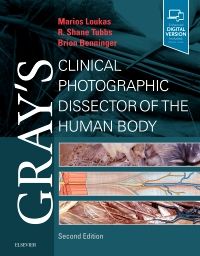 Book
Gray's Clinical Photographic Dissector of the Human Body
Book
Gray's Clinical Photographic Dissector of the Human BodyMarios Loukas
Oct 2018
Special Price $56.24 $74.99 -
30% OFF
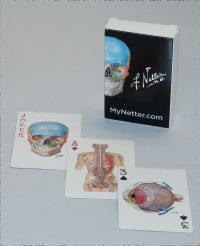 Flash Cards
Flash Cards
-
20% OFF
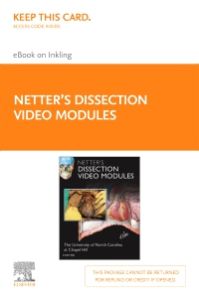 Online Resource
Netter's Dissection Video Modules (Retail Access Card)
Online Resource
Netter's Dissection Video Modules (Retail Access Card)and Frank H. Netter
Oct 2015
Special Price $144.79 $180.99 -
25% OFF
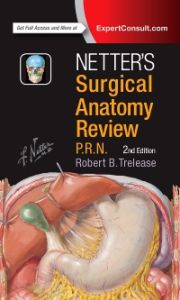 Book
Book
-
25% OFF
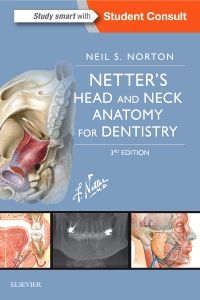 Book
Book
-
20% OFF
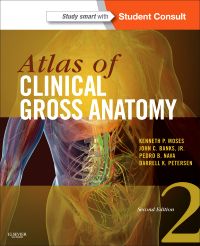 Book
Book
-
30% OFF
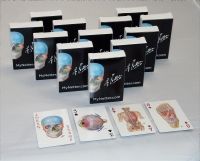 Flash Cards
Flash Cards
-
25% OFF
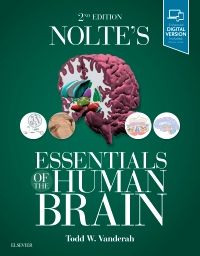 Book
Book
-
25% OFF
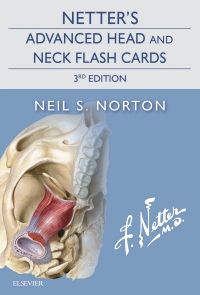 Flash Cards
Flash Cards
-
25% OFF
 Book
Book


